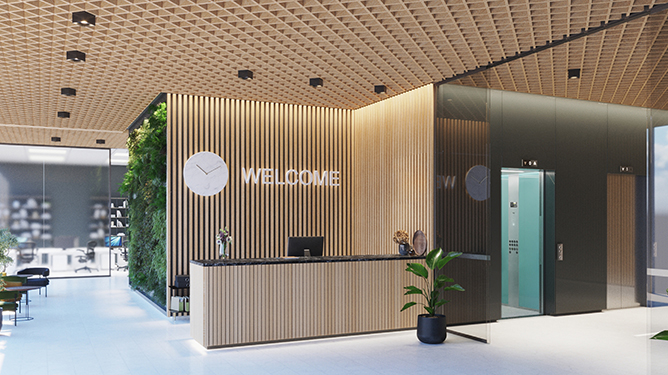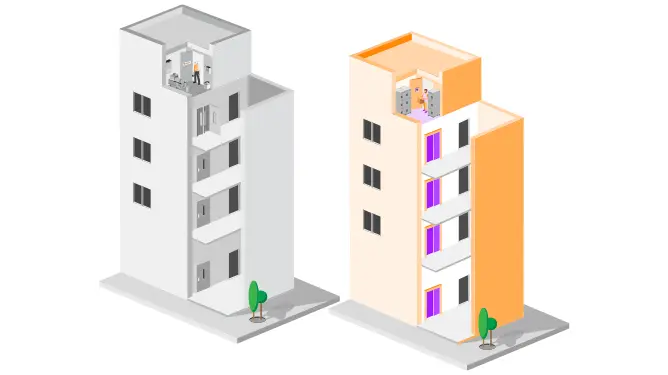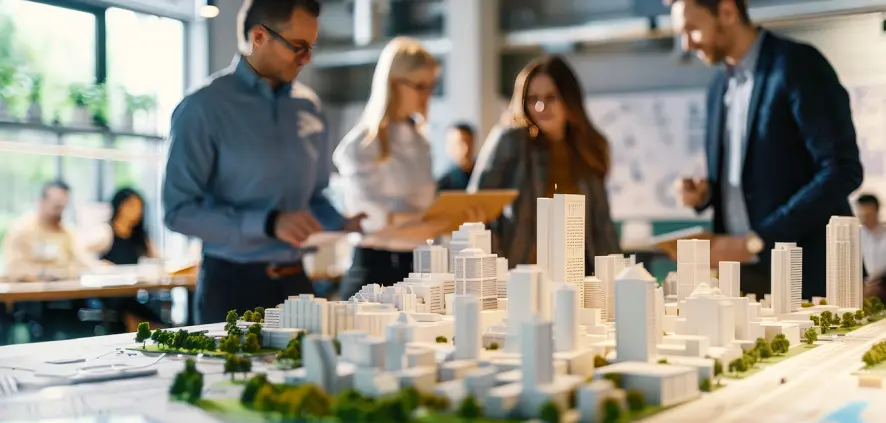Elevator Modernization Lifecycle and ROI Considerations
Smart Indian building owners and property managers review the options to either invest in elevator modernization or install a new elevator from an ROI perspective. Considering the elevator’s remaining lifecycle, as well as the return on investment (ROI) for their building, is important. Keep in mind that while elevators can often be operated for decades, they ultimately don’t last forever. Also, as elevator safety regulations in India continue to evolve, building operators need to ensure that their systems stay compliant (More on this in our blog post on Safety, Compliance, and Regulatory Aspects of Elevator Modernization).

Overall, the elevator modernization market is growing rapidly worldwide, indicating that many owners see the substantial value it brings. In India, specifically, the elevator modernization market is projected to grow at over 14% CAGR, from about $396m in 2023 to $1.19bn by 2032. This trend suggests that building stakeholders are increasingly factoring modernization into their asset management plans. Essentially, modernization is viewed as a capital improvement that pays back through energy savings, lower downtime, and code compliance, rather than a sunk cost.
To decide whether a partial elevator modernization or a full replacement is the more suitable approach, building owners need to ask themselves: How many more years of reliable elevator operations will each option give me, and at what total cost (including maintenance and energy)?
The ROI Perspective: Benefits of Opting for Full Lift Replacement
A brand-new elevator typically has an expected life of 20–30 years (with proper maintenance) before another major overhaul or replacement might be needed.
Installing a new elevator essentially resets the clock to zero in terms of lift lifecycle, but comes at significant costs and is also disruptive to the visitor flow of a building. The advantages are a new manufacturer's warranty and a maintenance regime with fewer repairs in the near term. The ROI of a full replacement can be thought of as the value of those next 25+ years of smoother operation, lower repair costs, and possibly improved building rents, and potentially a higher property value due to the installation of the modern elevator. It will likely also be easier to sell a building if elevators are new and functioning well.
So, rather than looking just at the cost side, it is important that Indian building owners also consider the additional value that is created by replacing an existing elevator.
An unreliable elevator that causes many unplanned outages and inconveniences to tenants can indirectly reduce revenue. While the financial impact of this is hard to quantify, depending on the severity of the outages, a certain impact on tenant retention and property reputation, and value is likely.
Another advantage of installing a new elevator is that it can handle future traffic requirements better than older and slower elevators (with a lower capacity and traveling speed). For example, if you anticipate increased building traffic due to higher occupancy rates, a new system will accommodate that better. So the “return” on installing a new lift is not just monetary savings, but also intangible benefits due to better service.

A More Blended Approach to Cost Absorption: Partial Elevator Modernization
Partial modernization extends the life of the existing elevator without fully resetting the clock. Rather than replacing the entire system, only specific components, such as controls, drive, motor, or door operating equipment, are replaced. It’s not uncommon for a building to initiate major elevator modernization around year 20–25 of an elevator’s life. From a cost perspective, the main advantage of partial modernization over a full replacement is that expenses are spaced out over a longer period (often years) while keeping the elevator functional and up-to-date with only short service interruptions during that period. If multiple elevators are available in a building, partial modernization can also be done elevator by elevator, thereby only reducing capacity temporarily, rather than causing periods with no elevator service at all.
Partial modernization is particularly appealing to cash-strapped associations or public institutions: partial modernization is easier to budget for, and the ROI is seen in keeping the system running without huge capital outlay.
The ROI for partial modernization is often very decent because the performance and efficiency gains are realized at a fraction of the cost of the new installation. One can think of it this way: if a modernization costs roughly 50% of a new elevator but yields 80–90% of the benefits (in terms of performance, reliability, efficiency), it’s a strong value proposition. Moreover, partial modernization avoids the significant one-off costs that accompany a full replacement.
From a lifecycle cost perspective, facility managers in India should consider the Net Present Value (NPV) of each option: all costs over the remaining life of the system (including maintenance, energy, and future replacements) discounted to today. Partial modernization often comes out favorably in NPV if the existing equipment isn’t at absolute end-of-life. This is because the initial cost is lower and spread out, and many benefits (energy savings, reduced breakdowns) start accruing immediately as bottlenecks get resolved in order of urgency and operational impact.
Full replacement, on the other hand, has a large upfront cost but then yields savings over a longer horizon.

The Impact of Elevator Modernization on the Value of a Property
An important piece of ROI is also the value of a property. Elevators are a visible asset in a building. A sleek, reliable elevator can enhance property value or rental rates, especially in residential and commercial properties where tenants in India correlate elevator quality with overall building quality. Thus, spending on modernization or replacement can often be partially recouped in higher rents or occupancy. For example, a residential apartment owner in a premium market might find that after a major elevator upgrade, resident satisfaction goes up, lease renewals improve, or that they can justify a slight rent increase due to improved amenities. In commercial offices, a modern elevator system can be a selling point for tenants. These factors contribute to ROI in less direct but important ways.
Timing is also important. We believe the best time to modernize is when you can still choose the timing, rather than after a failure. In India, however, many building owners defer elevator upgrades for as long as possible, but as safety regulations tighten and incidents of old elevators failing make news, the awareness is growing that timely modernization is a wise investment.
It is important to note that, when an elevator is so old that partial modernization would only buy a short respite, then it could be a poor ROI. For example, modernizing a 50-year-old elevator might still leave you with 50-year-old rails and cab structure that will likely cause issues, then investing in new controls only to find out that the elevator shaft needs major work just a few months later would be a terrible decision. In such cases, a clean replacement could be more cost-effective in the long term.
Recap: Partial Elevator Modernization reduces initial CAPEX and OPEX
In conclusion, regarding lifecycle and ROI: Partial modernization is often the more cost-effective strategy to prolong an elevator’s service life and get strong performance per dollar spent, especially if the current system has some usable life left in its structure.
Upfront costs (CAPEX) are much lower, often 50% or less than the cost of installing a new elevator. And yet long-term cost (OPEX) is often also reduced as well, as maintenance costs tend to go down as more reliable components are being used.
Thus, full replacement is a larger investment, and it can usually only be financially justified when the existing elevator is at the end of its useful life or when the building's demands have outgrown what incremental upgrades can provide. A sensible lifecycle approach that stresses regular maintenance and partial modernization as needed maximizes the ROI and the lifespan of an elevator.
TK Elevator: Expertise in Modernization and Replacement Solutions
While we have extensive experience in both full replacement and partial lift modernization, something that distinguishes us from other elevator manufacturers is our strong ability to deliver custom engineering solutions to extend the life of elevator systems.
In addition to our broad portfolio of eco-efficient elevator modernization packages and components that can be tailored to the needs of your building, one of our key strengths is our flexible, open-architecture approach to modernization. Our systems are designed to be integrated into existing elevators of any brand. No matter whether your equipment comes from TK Elevator or another brand, we can modernize it, working on all types of systems. This flexibility is backed by our vast network of local branches in India. Our elevator experts are ready to perform detailed system checks and to advise you on the best option. Contact your nearest branch today to learn how we can help you.
 India
India


